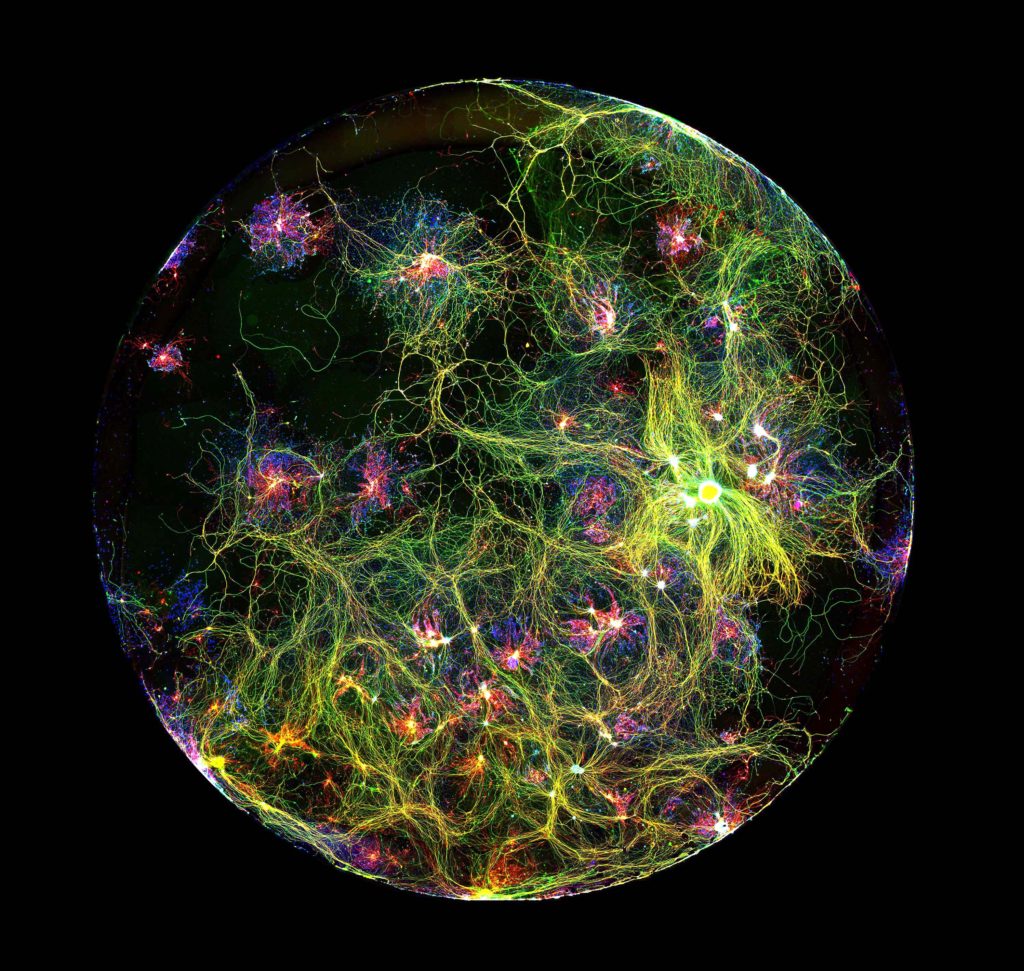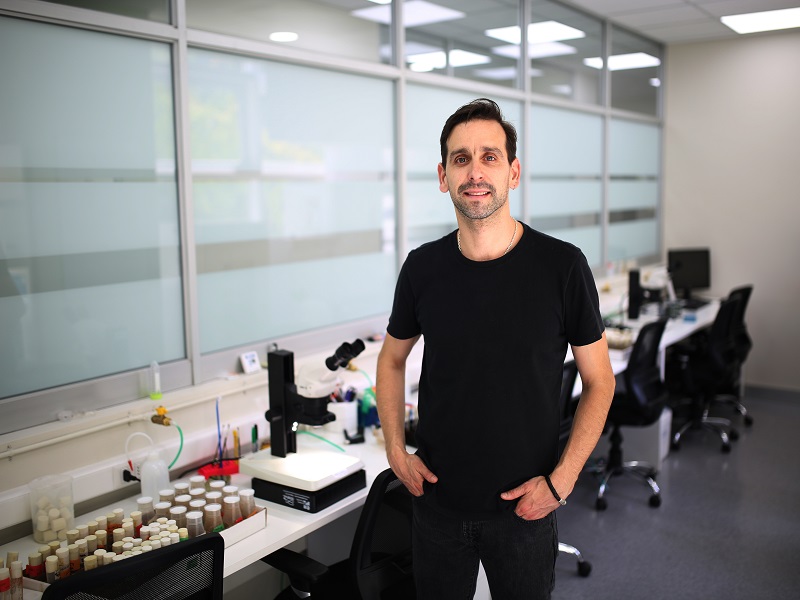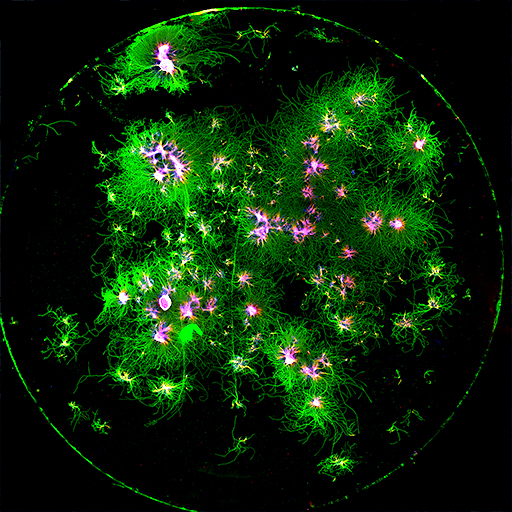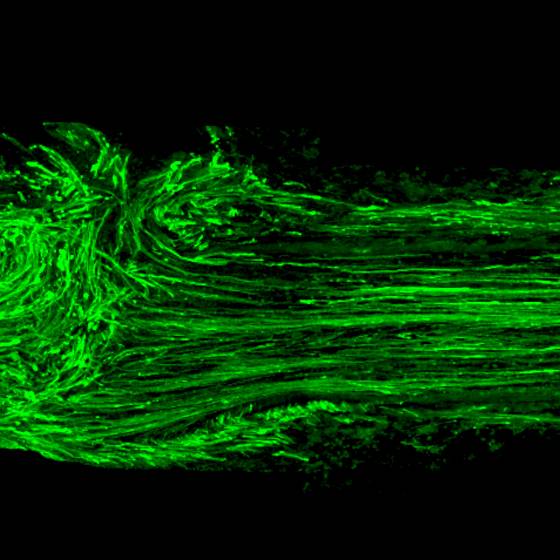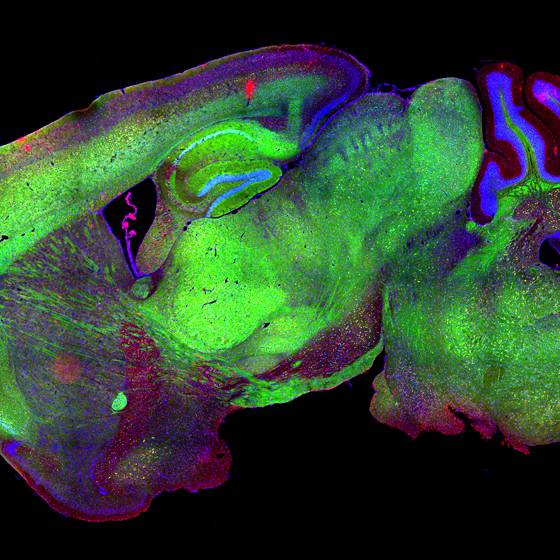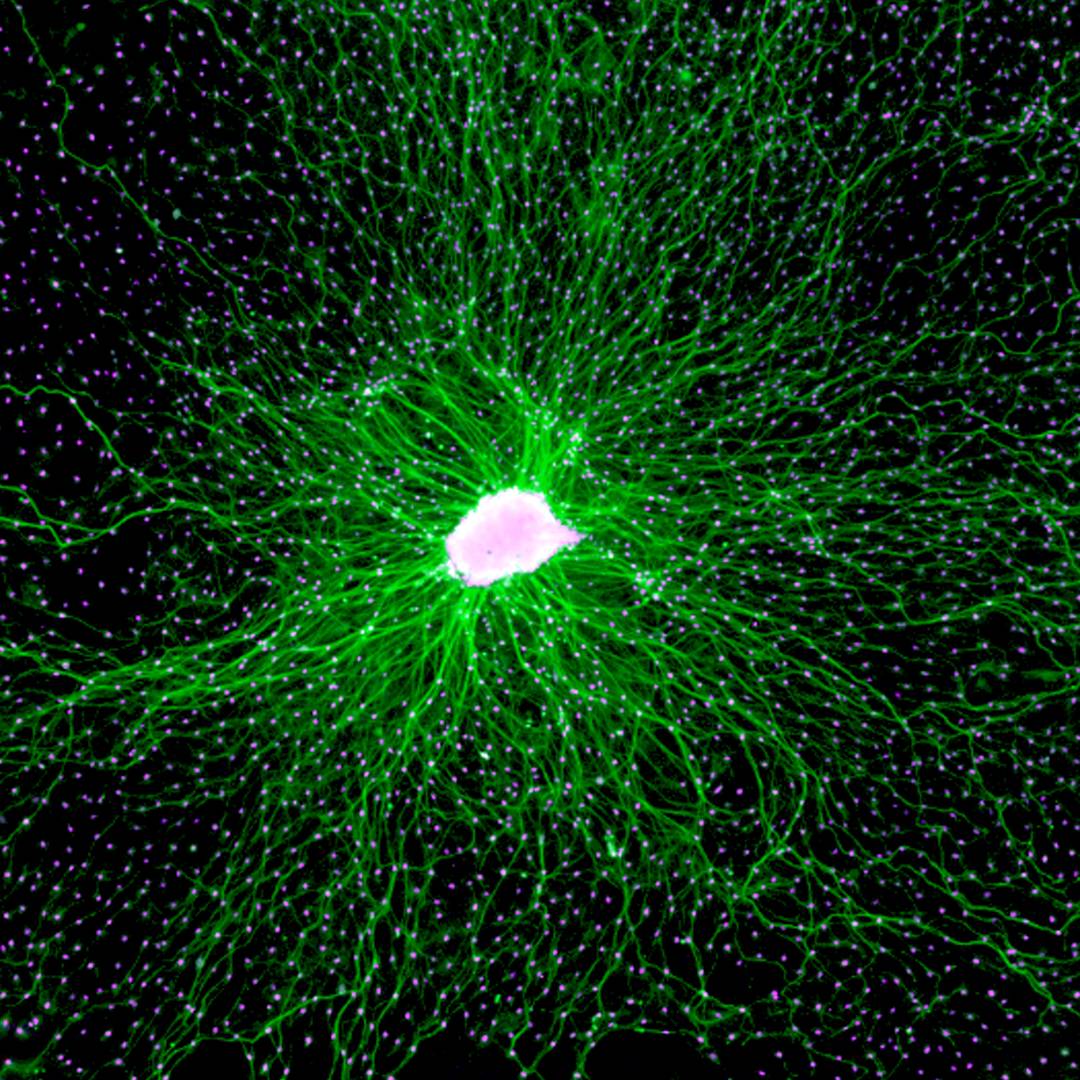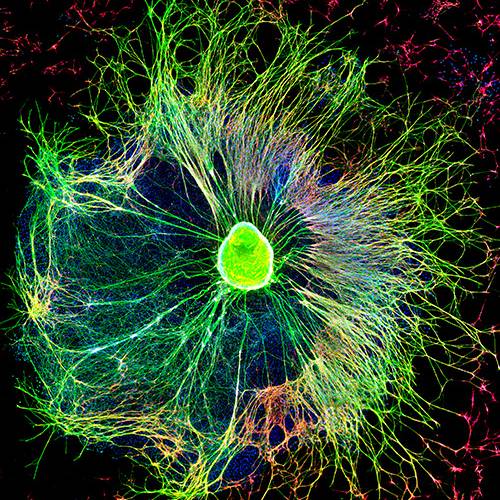Axonal Degeneration as a target for neuroprotection
Destruction programs are cellular mechanisms that have survival value when they operate under physiological control, but their malfunction could be deleterious for the organism. Apoptosis, or programmed cell death, is a well-known physiological destruction mechanism most apparent during development but persisting throughout the organism’s life. Other destruction programs are emerging as physiological processes that may not terminate in the destruction of the whole cell but only of restricted cellular domains. In the case of neurons, pruning of exuberant branches of terminal arborizations and degeneration of axons severed from their cell bodies are outstanding examples. Importantly, axonal degeneration is an early event in neurodegenerative condition including Alzheimer´s and Parkinson disease, as well as peripheral neuropathies. We are interested to define molecular players in the process of axonal degeneration to find therapeutic targets for neuroprotection.
Golgi staining of a mouse hippocampal section, with this technique, sparse neuronal labelling is obtained, which allows detailed analysis of individual neurons.

The degeneration of axons constitutes a salient feature shared by several neurodegenerative diseases that contributes to neuronal dysfunction and cell death. To date, the precise molecular and cellular mechanisms of axonal degeneration are under intense investigation. The morphological evidence indicates that axon degeneration as a consequence of aging and neurodegenerative diseases takes place in a retrograde fashion also known as dying back degeneration, which precedes cell death of the neuronal soma. Axon degeneration shares several characteristics with cell death by activation of the necroptotic signaling pathway, including mitochondrial dysfunction, ROS production, and intracellular calcium increase, and we have found that necroptosis inhibition by genetic or pharmacological means delays axonal degeneration in neurons from the peripheral and central nervous systems, as well as in model of Alzheimer´s and Parkinson Disease.
People involved

Macarena Arrazola
PI collaborator

PhD in Biological Sciences from the Catholic University of Chile. Studying the contribution of necroptosis in the age-associated axonal degeneration of the hippocampus, and the impact of using pharmacological approaches to revert neuronal dysfunction and cognitive impairment during aging, proposing necroptosis as an attractive target for the future development of geroprotective tools to treat age-related disabilities.

Daniela Rebolledo
Senior Research Assitant

BI am a Biochemist from Pontificia Universidad Católica de Chile (PUC) and PhD in Cell and Molecular Biology from the same university. My PhD thesis research was performed at the Physiology and Biophysics department, University of Washington. My research has focused on the physiology of the neuromuscular system and the pathological mechanisms behind neuromuscular disorders of diverse etiology.

Laura Gomez
Research Assitant

Medical Technologist from the U. Mayor. With experience in histological techniques, immunohistochemistry, immunofluorescence, biochemistry and molecular biology techniques. I am currently working on the role of RIPK3 in axonal degeneration in genetic models of Parkinson’s Disease , through Michael J. Fox’s project.

Rodrigo Leiva
Research Assitant

B.Sc(hons) degree in Neuroscience from the University of Glasgow and M.Sc in Integrative Neuroscience from the University of Edinburgh. I’m currently working on the role of axonal necroptosis and inflammation in the dopaminergic neurons of the nigrostriatal pathway in Parkinson’s Disease to assess it as a potential therapeutic target through the inhibition of RIPK3.
Related Publications
octubre 4, 2021
XBP-1 deficiency in the nervous system protects against amyotrophic lateral sclerosis by increasing autophagy
Hetz C, Thielen P, Matus S, Nassif M, Court F, Kiffin R, Martinez G, Cuervo AM, Brown RH, Glimcher LH.
Genes Dev. 2009 Oct 1;23(19):2294-306. doi: 10.1101/gad.1830709. Epub 2009 Sep 17.
PMID: 19762508
PUBLICATIONSDataNervous System FxPNS
octubre 4, 2021
A laminin-2, dystroglycan, utrophin axis is required for compartmentalization and elongation of myelin segments.
Court FA, Hewitt JE, Davies K, Patton BL, Uncini A, Wrabetz L, Feltri ML.
J Neurosci. 2009 Mar 25;29(12):3908-19. doi: 10.1523/JNEUROSCI.5672-08.2009.
PMID: 19321787
octubre 4, 2021
Abrogation of prostaglandin E2/EP4 signaling impairs the development of rag1+ lymphoid precursors in the thymus of zebrafish embryos
Villablanca EJ, Pistocchi A, Court FA, Cotelli F, Bordignon C, Allende ML, Traversari C, Russo V.
J Immunol. 2007 Jul 1;179(1):357-64. doi: 10.4049/jimmunol.179.1.357.
PMID: 17579056
PUBLICATIONSDataNervous System FxPNS
septiembre 30, 2021
Identity, developmental restriction and reactivity of extralaminar cells capping mammalian neuromuscular junctions.
Court FA, Gillingwater TH, Melrose S, Sherman DL, Greenshields KN, Morton AJ, Harris JB, Willison HJ, Ribchester RR.
J Cell Sci. 2008 Dec 1;121(Pt 23):3901-11. doi: 10.1242/jcs.031047. Epub 2008 Nov 11.
PMID: 19001504
Related News
Artista y científico transforman fotografías de redes neuronales en obras de arte
octubre 14, 2021
“Cultivo”, la muestra de Juana Gomez, está basada en el trabajo del Dr. Felipe Court, director del Centro de Biología Integrativa de la U. Mayor. Los conceptos de Arte y Ciencia se unieron para dar…
Director del CIB se adjudicó proyecto de la Fundación Michael J. Fox para estudiar nuevos blancos terapéuticos contra el Parkinson
octubre 14, 2021
l Dr. Felipe Court explicó que su propuesta es bloquear farmacológicamente el proceso de degeneración neuronal para detener la progresión de la enfermedad. El Dr. Felipe Court, director del Centro…
